How UNC Charlotte became the 49ers
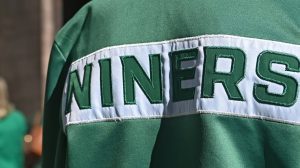
At the heart of every UNC Charlotte chant — FOR-TY! NI-NERS! — is a story of perseverance, grit and resilience. The “49ers” nickname is more than a moniker; it’s a tribute to the determined spirit that defines the University, and it begins with one pivotal year: 1949.
UNC Charlotte began in 1946 as the Charlotte Center of the University of North Carolina, one of several sites established across the state to serve veterans returning from World War II. By 1949, the state decided these centers were no longer needed and moved to close them, but one woman, Bonnie Cone (affectionately known as Miss Bonnie) refused to let Charlotte’s promise fade. A gifted math teacher, she taught future naval officers at Duke University during World War II before returning home to lead the Charlotte Center. Her determination kept the doors open and laid the foundation for the University we know today.
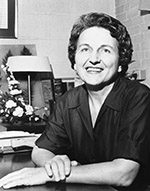
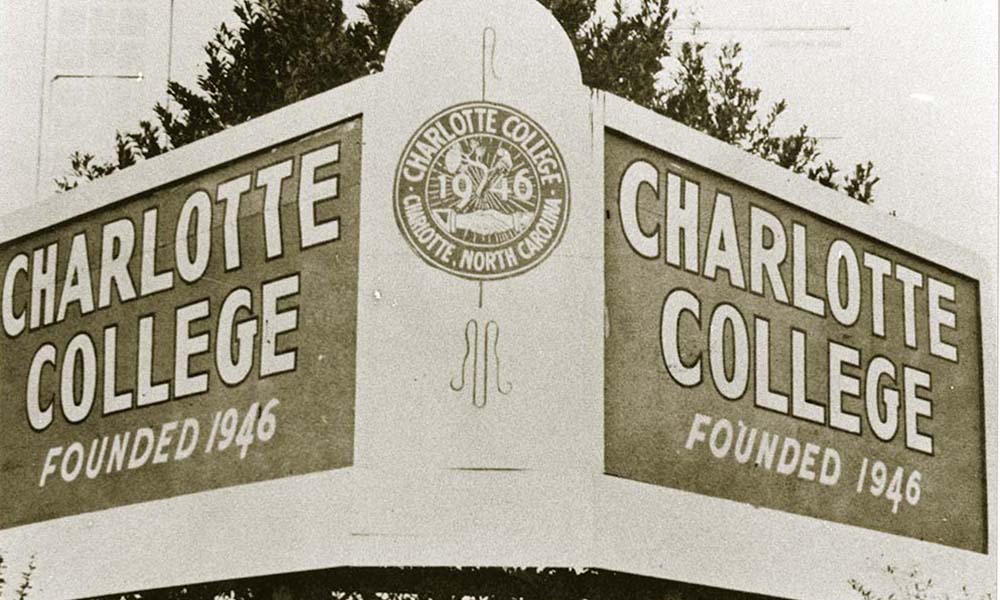
Miss Bonnie and a coalition of community supporters made the case that Charlotte needed public higher education. Their efforts saved the institution, and the center was renamed Charlotte College in 1949. In honor of that defining year and the resolve behind it, students later embraced the nickname “49ers.”
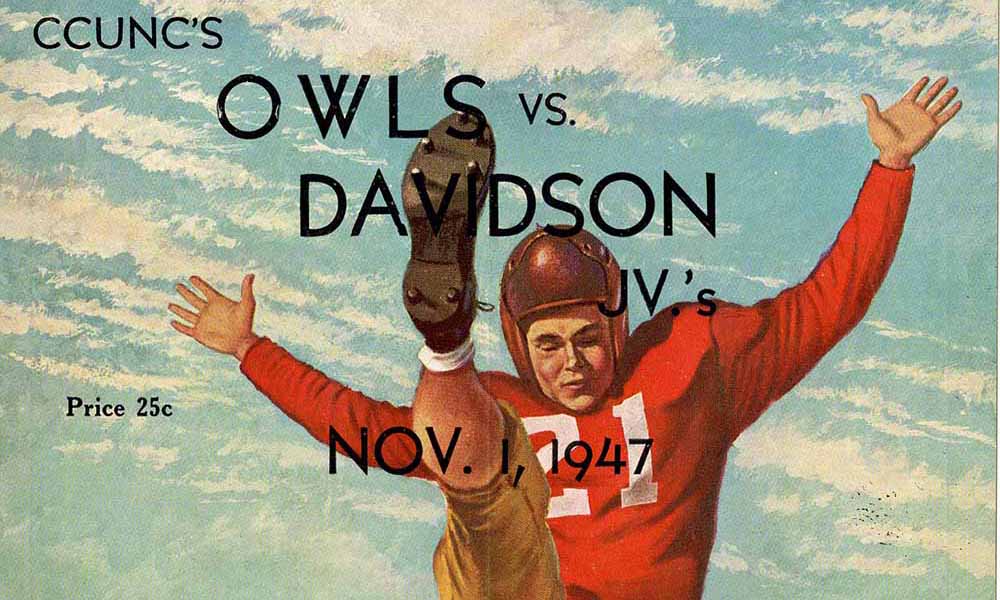
Before 1961, the school played as the “Owls,” a nod to its origins as a night school. As the college evolved into a traditional campus, students voted in 1961 to officially adopt the “49ers” name. A visual identity shift followed: from maroon and gray to a brief blue and white era (1961–1965), then to the now-familiar green and white in 1965, with gold added in 1970. When a group of students later proposed dark blue and white as the University’s colors, the idea was quickly reconsidered after it was noted that those shades already belonged to Duke.
Fate added a few fitting flourishes. In 1965, the North Carolina Legislature voted 49–0 to transform Charlotte College into the University of North Carolina at Charlotte. The main campus also sits along Highway 49, a daily reminder of the year that changed everything.
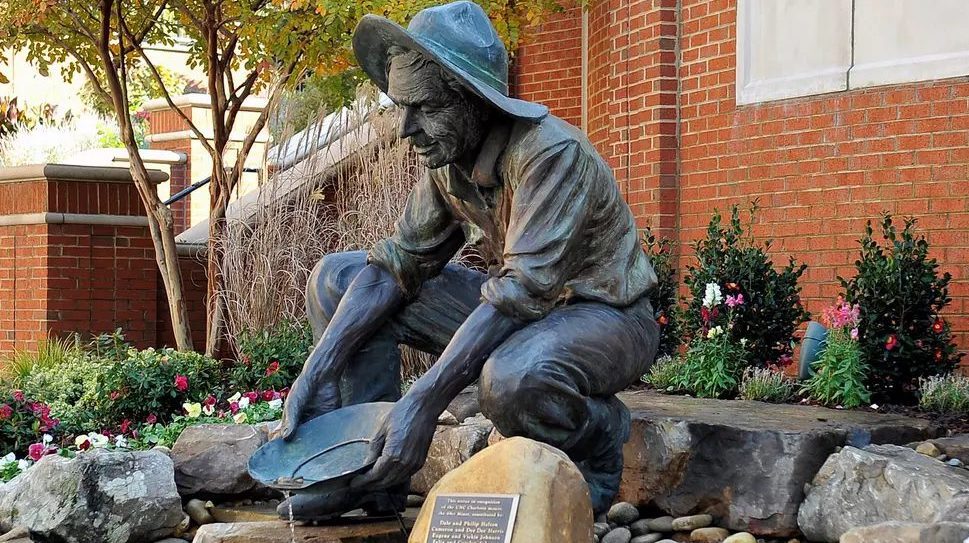
A few years later, campus pride found a face. For the first three decades, the mascot was simply called the Forty-Niner. That changed in 1991 when the 49er Miner statue arrived on campus, and a student contest gave him his name: Norm.
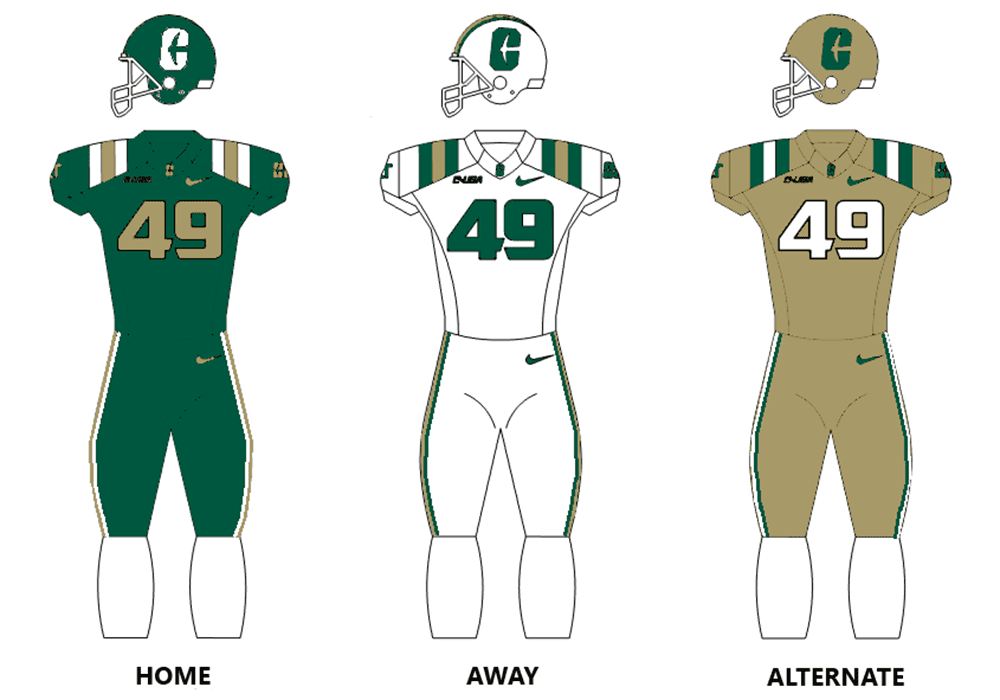
Charlotte athletics embodies that same pioneering spirit. Football first appeared on campus in 1946, paused after two seasons, but returned in 2013 following robust student and alumni lobbying. The modern program’s launch introduced a new tradition: each game, the coaching staff selects one player to wear the No. 49 jersey, an honor reserved for a 49er who embodies effort, attitude and team-first leadership. Defensive lineman Larry Ogunjobi wore No. 49 in the inaugural game on Aug. 31, 2013, later becoming the first 49er drafted into the NFL. He now plays for the Pittsburgh Steelers.
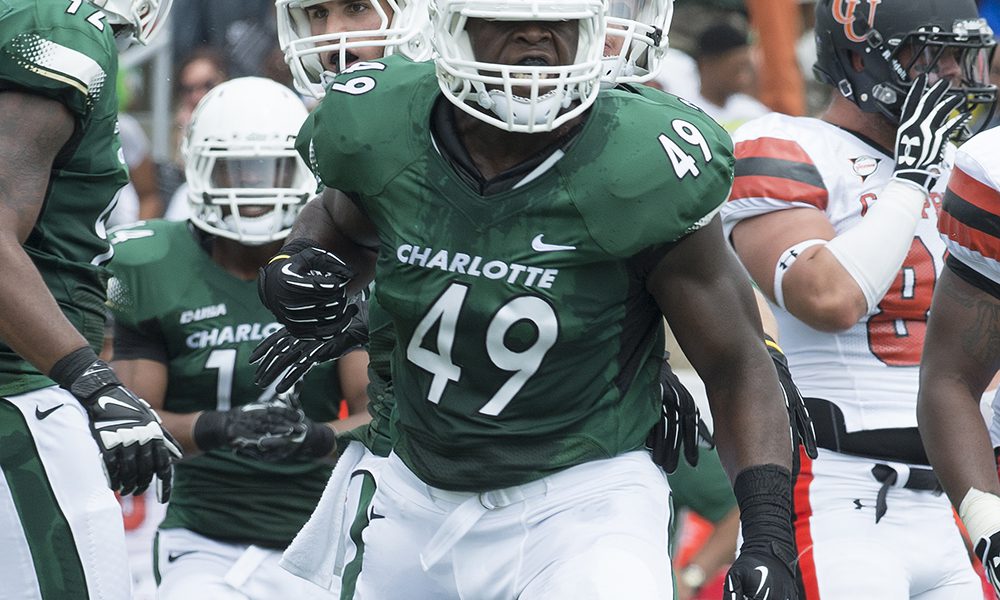
Homecoming — a showcase of 49er pride — began with basketball in 1969. Since the return of 49ers football, Homecoming is the tradition uniting students, alumni, faculty and staff in celebration of a shared identity. Each year, Homecoming brings the campus community together to cheer on the Niners, create lasting memories and honor the University’s history.
As Homecoming evolved, UNC Charlotte introduced a new tradition in 2021: The Niner 9. Replacing the former king and queen model, The Niner 9 recognizes nine students who exemplify the University’s values and spirit across diverse disciplines and backgrounds. From this group, the campus community selects one Golden Niner, honoring leadership, character and pride in what it means to be a 49er.
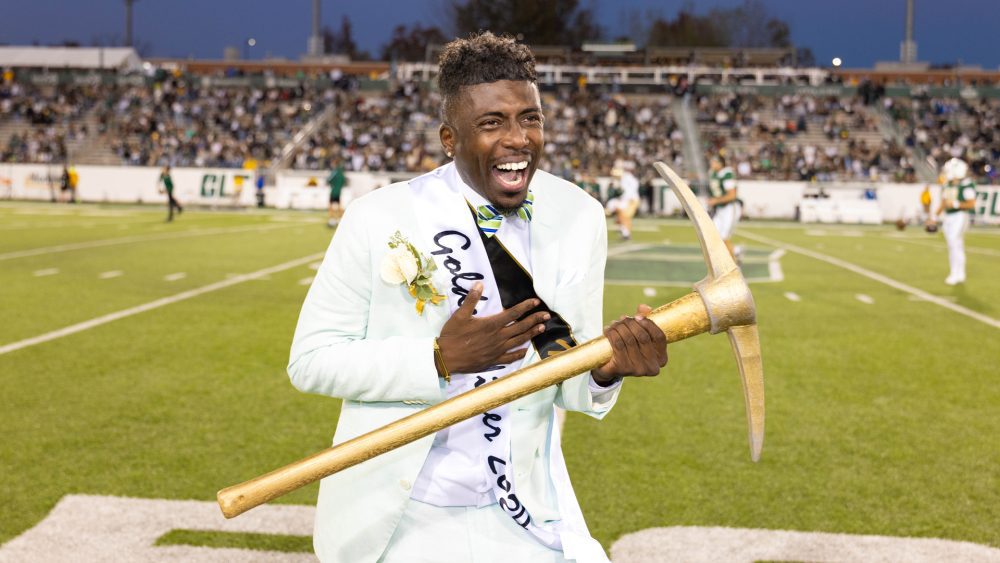
Niner Nation Week: Homecoming is more than a celebration; it’s a living tribute to the resilience and ambition that have defined Charlotte from the start. Every time we chant FOR-TY! NI-NERS!, we honor the resolve of our founders, the pioneering class of 1949, and generations of 49ers who turned determination into progress — and progress into momentum.